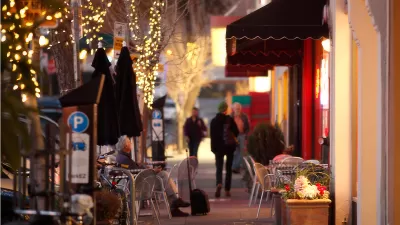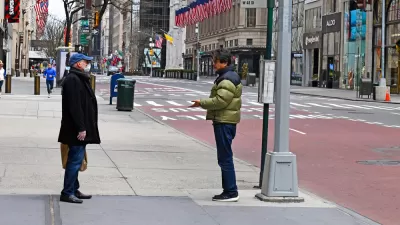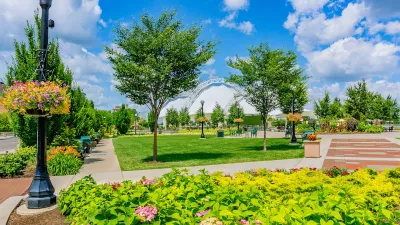Alexander Garvin argues that it’s time for the end of the mega-project in an excerpt from "The Heart of the City: Creating Vibrant Downtowns for a New Century."

A new stadium, or some other mega-project isn't going to save downtown, Alexander Garvin argues in an excerpt from his new book, The Heart of the City: Creating Vibrant Downtowns for a New Century. "Rather than engaging in cataclysmic redevelopment, building huge, extraordinarily expensive public facilities, or giving gifts (aka subsidies) to privately owned businesses, we should be devising actions that help the people and institutions who are changing," Garvin writes. To help these people, Garvin suggests expanding the public realm and working to create a sustainable environment.
Garvin uses the example of New York and Denver as places that have made more public space for people in the city’s center. "New York City has been particularly effective in doing this without acquiring additional property by reconfiguring territory used by pedestrians, moving vehicles, and parking," Garvin contends. Creating safe attractive spaces for people to be in the city's center can shift transit modes, and encourage walking and recreation.
Downtowns also need to think about their local environments. Garvin talks about sustainability not just in a global sense but also in terms of improving the desirability and vibrancy of the city’s center. "Trees are the most effective and underestimated downtown occupants that improve air quality while reducing noise, absorbing runoff, and stabilizing ambient temperature," Garvin writes. Beyond trees, Garvin argues cities should look to create more park land by acquiring extra land when undertaking projects and converting the land into public parks.
FULL STORY: Lessons for Any Downtown

Planetizen Federal Action Tracker
A weekly monitor of how Trump’s orders and actions are impacting planners and planning in America.

Congressman Proposes Bill to Rename DC Metro “Trump Train”
The Make Autorail Great Again Act would withhold federal funding to the system until the Washington Metropolitan Area Transit Authority (WMATA), rebrands as the Washington Metropolitan Authority for Greater Access (WMAGA).

DARTSpace Platform Streamlines Dallas TOD Application Process
The Dallas transit agency hopes a shorter permitting timeline will boost transit-oriented development around rail stations.

San Francisco's School District Spent $105M To Build Affordable Housing for Teachers — And That's Just the Beginning
SFUSD joins a growing list of school districts using their land holdings to address housing affordability challenges faced by their own employees.

Car-Centric LA Suburb Looks to a Train-Oriented Future
City leaders in Rancho Cucamonga, the future western terminus of the Brightline West rail line to Las Vegas, want to reimagine the city as a transit-oriented, pedestrian-friendly community.

New Alaska Bitcoin Mine Would Burn as Much Energy as the State’s Largest Coal Plant
Fueled by “stranded” natural gas, the startup hopes to become the largest in the US, and to make Alaska an industry center.
Urban Design for Planners 1: Software Tools
This six-course series explores essential urban design concepts using open source software and equips planners with the tools they need to participate fully in the urban design process.
Planning for Universal Design
Learn the tools for implementing Universal Design in planning regulations.
Municipality of Princeton
Roanoke Valley-Alleghany Regional Commission
City of Mt Shasta
City of Camden Redevelopment Agency
City of Astoria
Transportation Research & Education Center (TREC) at Portland State University
US High Speed Rail Association
City of Camden Redevelopment Agency
Municipality of Princeton (NJ)





























